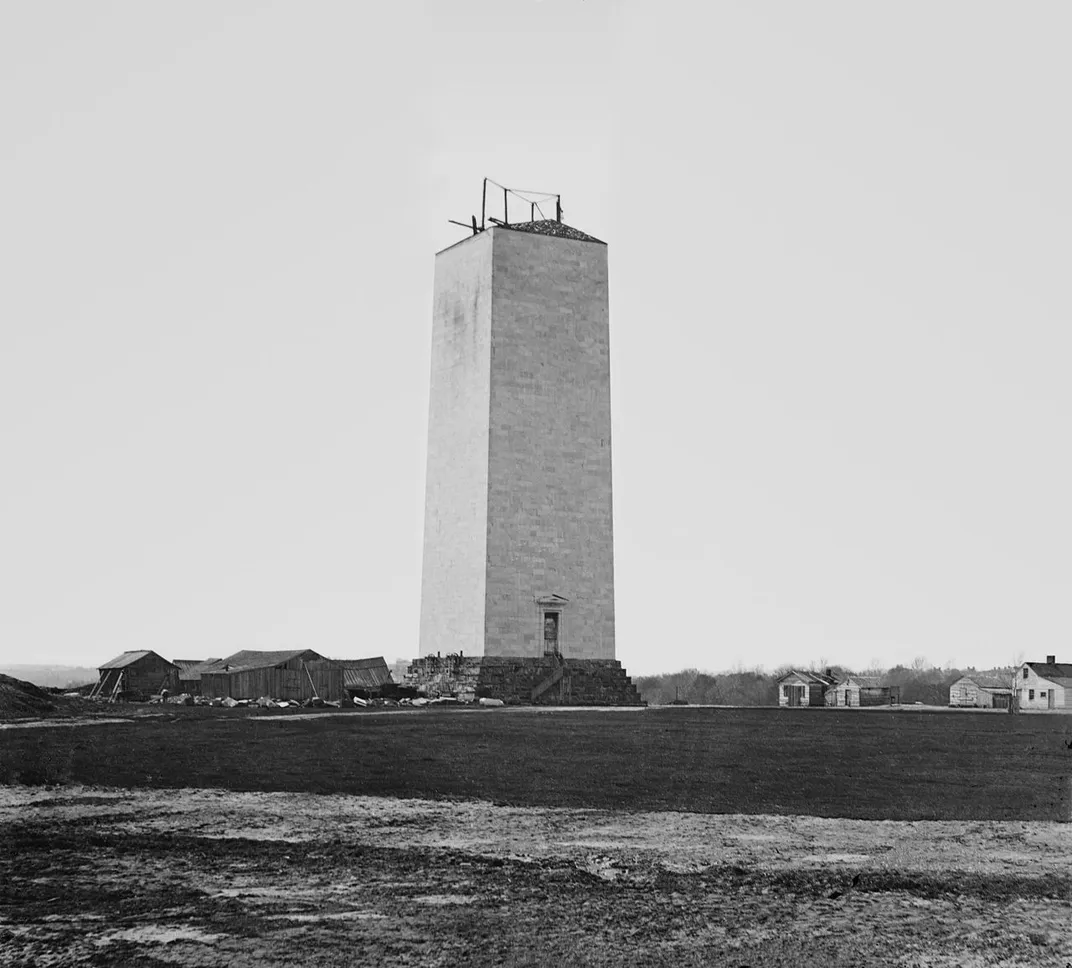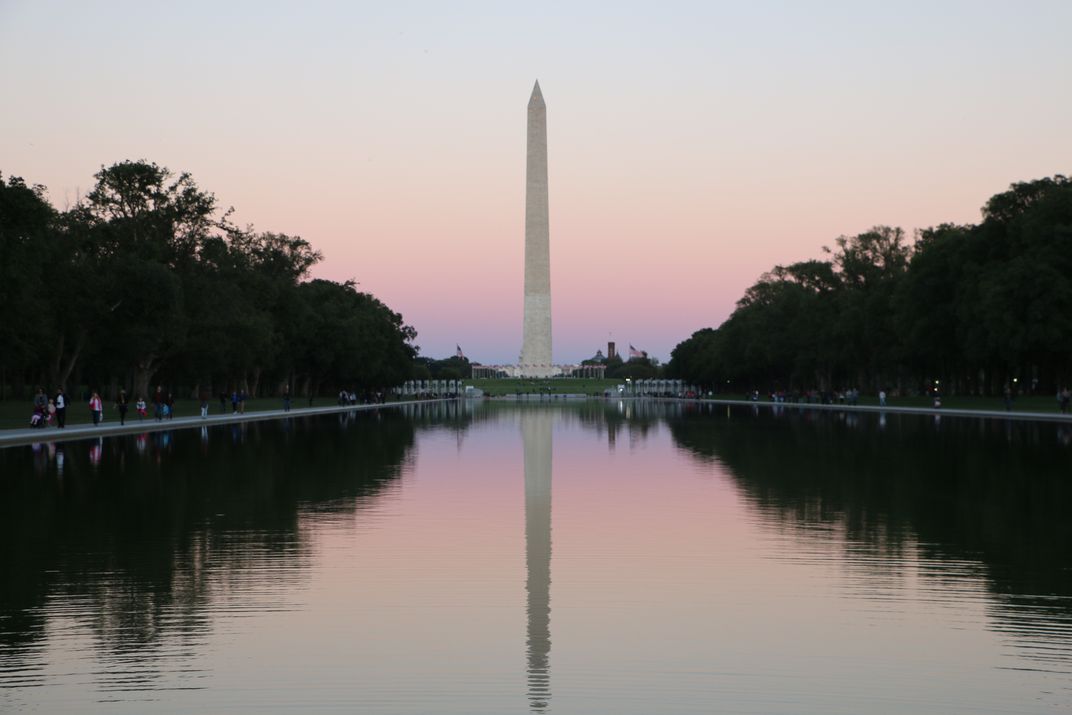Watch a Bolt of Lightning Strike the Washington Monument
The iconic obelisk remains temporarily closed as workers repair an electronic access system damaged by the storm
:focal(2706x850:2707x851)/https://tf-cmsv2-smithsonianmag-media.s3.amazonaws.com/filer/4c/5e/4c5efd12-13e6-471e-a059-dfe64552c083/gettyimages-1069721598.jpg)
A huge lightning bolt electrified the Washington Monument last Sunday around 12:30 a.m., the National Park Service (NPS) announced on Twitter.
Nobody was hurt in the incident, the government agency tells Artnet News’ Caroline Goldstein. But the unusually strong bolt damaged parts of the electronic access system that workers use to operate the landmark’s doors and elevators.
Authorities closed the monument on Monday and have not yet announced when the historic obelisk will reopen to visitors. On Tuesday, NPS spokesperson Mike Litterst told the Washington Post’s Dana Hedgpeth that crews were waiting for parts to be delivered before they could move forward with repairs.
The monument had previously been closed for six months due the Covid-19 pandemic. It only reopened on July 14, according to a statement.
UPDATE: The Washington Monument will be closed today as we repair damage to the electronic access system caused by Sunday morning’s lightning strike. #WashingtonDC https://t.co/HD6U35C66n
— National Mall NPS (@NationalMallNPS) August 16, 2021
Standing more than 555 feet tall, the looming white structure dedicated to George Washington regularly attracts lightning strikes during Washington, D.C. thunderstorms. As Kevin Ambrose of the Post’s Capital Weather Gang reported last year, meteorologist Chris Vagasky estimates that bolts strike the monument “twice per year on the high end and once every five years on the low end.”
At least one other lightning bolt has grazed the monument this year, reports the Post. And, on June 4, 2020, onlookers captured stunning footage of another strike. More than 11 million people viewed a viral clip of the moment on Twitter.
Litterst tells the Post that this recent incident marks the “first time we’ve had any issue with the electronics getting scrambled.”
For a few years after its completion in December 1884, the Washington Monument stood taller than all other humanmade objects in the world. (It was eventually outdone by Paris’ Eiffel Tower, which was erected in 1889 and stands 984 feet tall.) American engineers had to figure out how to protect the structure from lightning strikes—and the process involved some trial and error, according to Atlas Obscura.
Originally, scientists devised an aluminum pyramid that sat at the peak of the pointed marble capstone. Designed to act like a lightning rod, the structure proved ineffective when, less than a year after its installation, a bolt of lightning hit the tip of the monument and damaged some of its marble.
Scientists then installed a spiked collar with copper rods that successfully diverted strikes for decades. During renovations following a 2011 earthquake, this old equipment was removed and replaced with two modern lightning rods, per Atlas Obscura. (The aluminum pyramid remains affixed to the top of the obelisk.)
The Washington Monument started out in 1833 as a privately funded endeavor honoring America’s first president. Organizers laid the structure’s enormous white marble cornerstone in an 1848 ceremony attended by tens of thousands, as Ronald G. Shafer reported for the Post last year. Guests included President James K. Polk and future presidents James Buchanan, Abraham Lincoln and Andrew Johnson, per the NPS.
Funding woes and the outbreak of the American Civil War brought construction work to a halt in 1854, when the structure stood just 152 feet tall. The incomplete monument sat neglected until 1876, when Congress appropriated federal funding toward the project.
With great fanfare, the monument was finally dedicated on February 21, 1885. Speaker of the House Robert C. Winthrop—who had also attended the cornerstone-laying ceremony—was now 76 years old and too sick to travel to Washington, so he sent a speech to be read aloud at the event.
“The lightnings of Heaven may scar and blacken [the monument],” Winthrop wrote. “An earthquake may shake its foundations. Some mighty tornado, or resistless cyclone, may rend its massive blocks asunder and hurl huge fragments to the ground. But the character which it commemorates and illustrates is secure.”
/https://tf-cmsv2-smithsonianmag-media.s3.amazonaws.com/accounts/headshot/nora.png)



/https://tf-cmsv2-smithsonianmag-media.s3.amazonaws.com/accounts/headshot/nora.png)